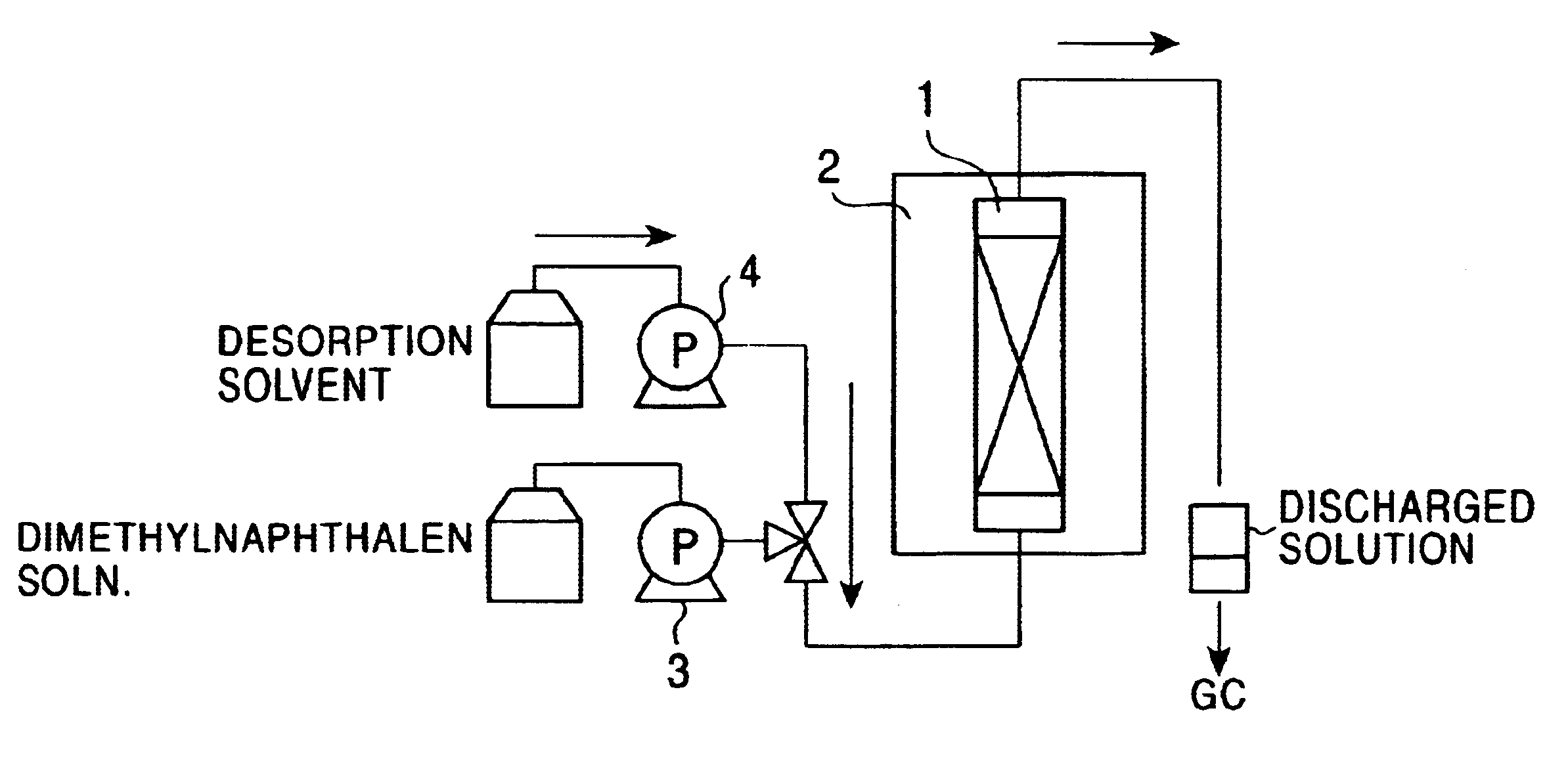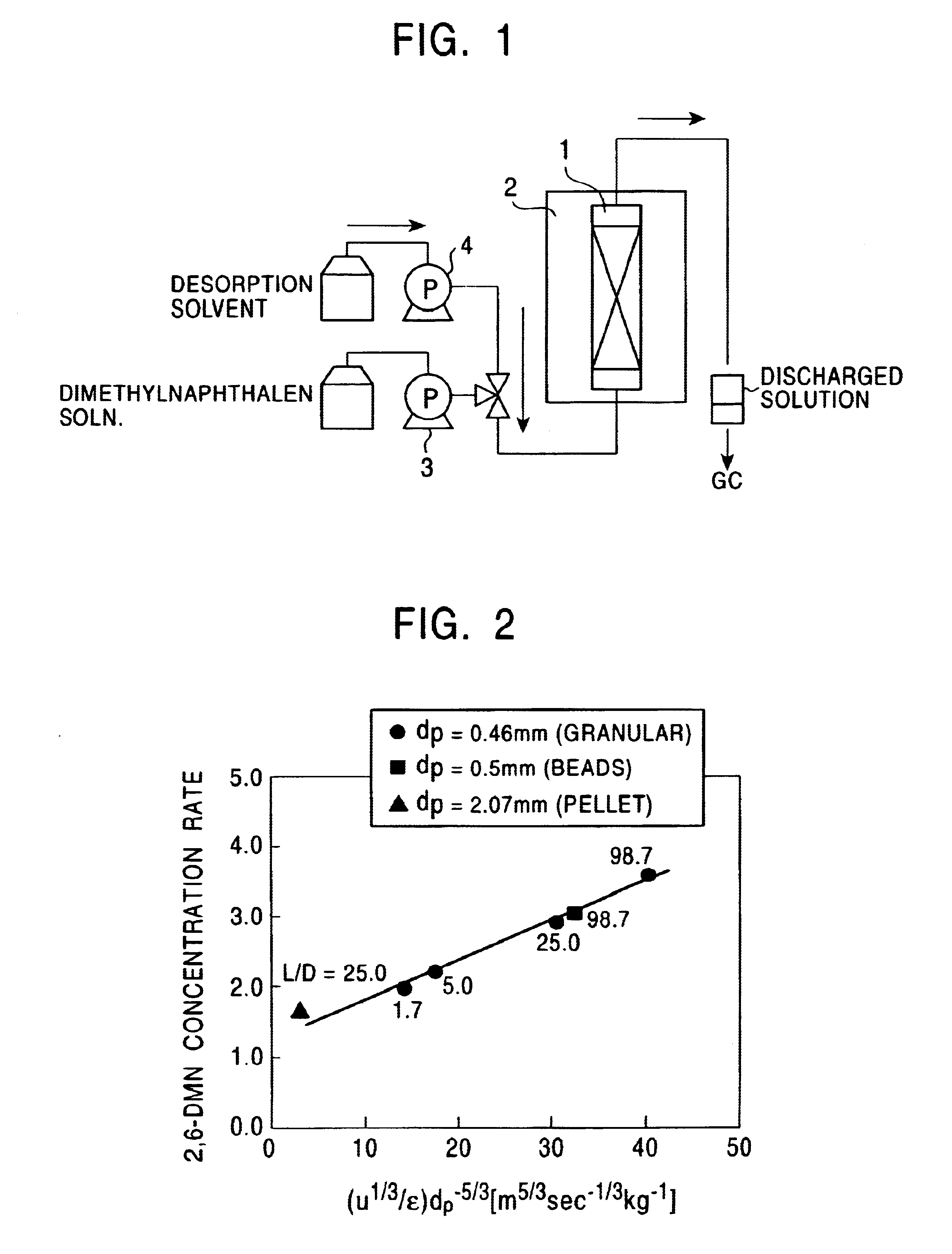Method for concentrating 2,6-dimethylnaphthalene
a technology of dimethylnaphthalene and selective concentrating, which is applied in the direction of separation process, organic chemistry, chemistry apparatus and processes, etc., can solve the problems of reducing the yield of 2,6-dimethylnaphthalene, difficult to separate, and difficulty in efficiently concentrating 2,6-dimethylnaphthalen
- Summary
- Abstract
- Description
- Claims
- Application Information
AI Technical Summary
Benefits of technology
Problems solved by technology
Method used
Image
Examples
Embodiment Construction
An example of the method for concentrating 2,6-dimethylnaphthalene of the present invention, conducted on an actual plant scale will now be described.
The following eight dimethylnaphthalene isomers were used: 1,2-dimethylnaphthalene, 1,3-dimethylnaphthalene, 1,4-dimethylnaphthalene, 1,6-dimethylnaphthalene, 1,7-dimethylnaphthalene, 2,3-dimethylnaphthalene, 2,6-dimethylnaphthalene, and 2,7-dimethylnaphthalene. The isomers were each diluted with o-xylene in the proportion of 1 to 1 and then a dimethylnaphthalene isomer mixture solution was prepared such that the content of 2,6-dimethylnaphthalene and 2,7-dimethylnaphthalene was 10% (the ratio of 2,6-dimethylnaphthalene to 2,7-dimethylnaphthalene was 1.0).
A K-Y type zeolite having a bead shape (0.5.times.10.sup.-3 m in grain size) was used as an adsorbent and was packed in an adsorption column of 800 mm in inner diameter and 2000 mm in length. The packing density .epsilon. was 650 kg / m.sup.3.
The dimethylnaphthalene isomer mixture solut...
PUM
| Property | Measurement | Unit |
|---|---|---|
| packing density | aaaaa | aaaaa |
| length | aaaaa | aaaaa |
| inner diameter | aaaaa | aaaaa |
Abstract
Description
Claims
Application Information
 Login to View More
Login to View More - R&D
- Intellectual Property
- Life Sciences
- Materials
- Tech Scout
- Unparalleled Data Quality
- Higher Quality Content
- 60% Fewer Hallucinations
Browse by: Latest US Patents, China's latest patents, Technical Efficacy Thesaurus, Application Domain, Technology Topic, Popular Technical Reports.
© 2025 PatSnap. All rights reserved.Legal|Privacy policy|Modern Slavery Act Transparency Statement|Sitemap|About US| Contact US: help@patsnap.com


